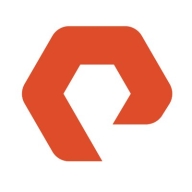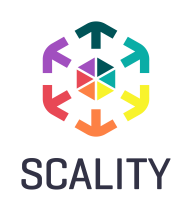


Red Hat Ceph Storage and Scality RING compete in the scalable, distributed storage solutions category. Scality RING often holds the upper hand due to its advanced features tailored for hybrid cloud environments.
Features: Red Hat Ceph Storage offers seamless scalability, data integrity through fault tolerance, and integration with OpenStack. Scality RING provides advanced hybrid cloud capabilities, efficient storage tiering, and supports a wide range of protocols, making it stand out in feature set.
Room for Improvement: Red Hat Ceph Storage could enhance its ease of deployment and user-friendly configuration options. Additionally, its complex integration process may require improvement. Scality RING might benefit from offering more competitive pricing and expanding support for non-hybrid environments. Enhancements in user interface and documentation could also improve its usability.
Ease of Deployment and Customer Service: Scality RING offers straightforward deployment with automation options and professional customer service, catering to enterprises seeking quick integration. In contrast, Red Hat Ceph Storage emphasizes flexible configurations, which can be complex and may require specialized assistance.
Pricing and ROI: Red Hat Ceph Storage is generally more cost-effective upfront due to its open-source nature, delivering a rapid ROI through scalability. Scality RING involves higher initial costs but offers significant long-term returns from operational efficiencies and advanced features.
| Product | Market Share (%) |
|---|---|
| Red Hat Ceph Storage | 14.3% |
| Scality RING | 4.0% |
| Pure Storage FlashBlade | 3.3% |
| Other | 78.4% |



| Company Size | Count |
|---|---|
| Small Business | 11 |
| Midsize Enterprise | 11 |
| Large Enterprise | 21 |
| Company Size | Count |
|---|---|
| Small Business | 13 |
| Midsize Enterprise | 4 |
| Large Enterprise | 15 |
| Company Size | Count |
|---|---|
| Small Business | 3 |
| Midsize Enterprise | 1 |
| Large Enterprise | 12 |
FlashBlade is the industry’s most advanced scale-out storage for unstructured data, powered by a modern, massively parallel architecture to consolidate complex data silos (like backup appliances and data lakes) and accelerate tomorrow’s discoveries and insights.
Scality RING is the scalable and resilient object storage solution designed for modern workloads, providing seamless data protection against evolving cyber threats.
Scality RING leverages S3 object storage to meet unpredictable demands with a patented MultiScale Architecture that offers limitless scalability across capacity, performance, and more. It delivers end-to-end cyber resilience with CORE5 for ransomware protection, while its cloud-style economics and intuitive management empower enterprises to accelerate AI initiatives and optimize cloud deployments. Its flexibility is ideal for service providers managing extensive data needs.
What are the key features of Scality RING?Scality RING is extensively implemented in backup solutions across industries, supporting platforms like Veeam and CommVault. It aids in storage expansion and management of large data volumes alongside multi-site architectures. While not leading in AI spaces due to performance constraints, there's potential with faster disk support. It's also used in archives, binary lakes, multimedia services, and AI data lakes.
We monitor all Software Defined Storage (SDS) reviews to prevent fraudulent reviews and keep review quality high. We do not post reviews by company employees or direct competitors. We validate each review for authenticity via cross-reference with LinkedIn, and personal follow-up with the reviewer when necessary.